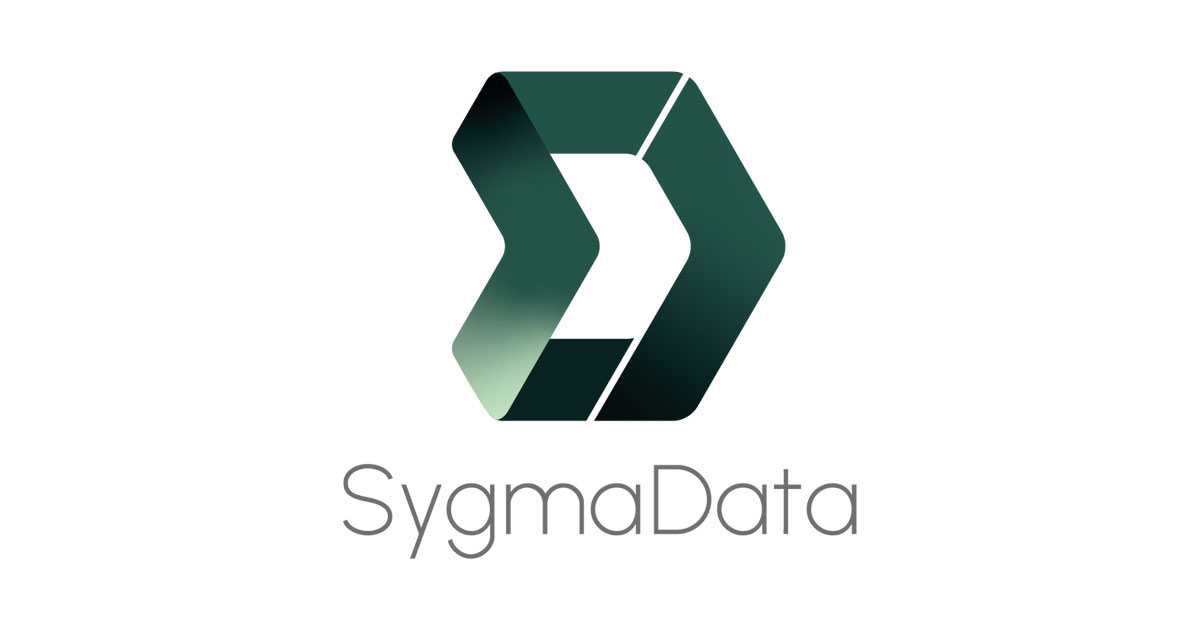Download the PDF document here: From Legacy Data Lakes to Intelligent Data Fabrics A Migration Blueprint for Energy Operators
From Legacy Data Lakes to Intelligent Data Fabrics : A Migration Blueprint for Energy Operators
Learn how energy operators can migrate from legacy data lakes to intelligent data fabrics to improve efficiency, AI integration, and grid modernization: From Data lake to Data Fabric in the world of Energy
Table of Contents
Characteristics of Intelligent Data Fabrics. 5
Steps in the Migration Process. 7
Step 1: Define Migration Type and Method. 7
Step 2: Develop a Detailed Migration Plan. 7
Step 3: Audit and Clean Data. 7
Step 4: Communicate Effectively. 7
Best Practices for Successful Data Migration. 8
Overview of Successful Migrations. 9
Accelerated ETL Migration to Cloud. 9
Nortal’s Implementation of Microsoft Fabric. 9
Transition to Renewable Energy. 10
Digital Transformation and Data Utilization. 10
Enhanced Data Management Techniques. 10
Machine Learning and Predictive Analytics. 10
summary
The migration from legacy data lakes to intelligent data fabrics is a critical evolution for energy operators navigating the complexities of modern data management. As the energy sector shifts towards cleaner and more efficient energy sources, it is confronted with an ever-increasing volume and variety of data generated from distributed energy systems, necessitating sophisticated integration strategies to enhance operational efficiency and customer service.[1][2] Intelligent data fabrics offer a transformative architecture designed to streamline data integration and accessibility, enabling organizations to maximize the value of their existing systems while addressing the challenges posed by siloed data sources and regulatory compliance.[1][3][4]
This migration is notable due to its implications for the broader energy landscape, particularly as companies leverage advanced technologies such as artificial intelligence (AI) and real-time analytics to create smart grids and optimize renewable energy utilization. By adopting intelligent data fabrics, energy operators can overcome inefficiencies associated with poorly managed data lakes, avoiding the pitfalls of “data swamps” that can arise from disorganized data repositories.[5][6][7] Additionally, the implementation of robust governance frameworks ensures data accuracy and security, which are paramount in an industry that handles sensitive information and faces stringent regulatory requirements.[8][9]
Prominent case studies illustrate the successful application of intelligent data fabrics, highlighting significant operational improvements across the energy sector. For example, companies like Shell have effectively integrated their sensor data with AI-driven models to facilitate predictive maintenance and optimize resource management, demonstrating the real-world impact of these technologies.[10][11] However, the transition is not without challenges; organizations must navigate issues such as data quality, migration complexities, and the need for strategic planning to ensure a seamless shift to modern data architectures.[12][13][14]
As energy operators continue to embrace digital transformation, the focus on intelligent data fabrics is expected to grow, driven by the dual demands of enhanced operational performance and compliance with evolving energy standards. With the potential to unlock substantial value and streamline decision-making processes, the migration to intelligent data fabrics represents a pivotal step towards a more efficient, data-driven future in the energy sector.[15][16][17]
Background
The energy sector is undergoing a significant transformation, characterized by a rising demand for clean, affordable, and reliable energy sources, alongside rapid technological advancements. This evolution has been complicated by the increasing complexity and volume of data generated, which necessitates effective data management and integration strategies to navigate the modern landscape of energy production and distribution[1].
In the past, energy systems were primarily centralized, allowing for easier monitoring of inputs and outputs. However, the shift toward renewable energy sources has introduced challenges due to their inherently distributed and intermittent nature. For instance, solar panels and wind turbines require constant monitoring to optimize their performance, as their energy production is dependent on environmental conditions[18][2]. This necessitates both horizontal and vertical scalability to accommodate the diverse data collection needs across multiple locations[18].
Data integration has become crucial for energy companies facing disconnected and siloed data sources. The concept of a data fabric has emerged as a strategic solution to streamline data integration across various sources, thereby enhancing operational efficiency and customer experience[1][2]. By establishing robust data governance frameworks, organizations can maintain the accuracy and security of their data, which is particularly important in a sector that deals with sensitive information and regulatory compliance[1].
The advent of advanced technologies such as artificial intelligence (AI) and data lakes is reshaping the energy landscape. Data lakes offer scalable and agile repositories that facilitate advanced analytics and real-time decision-making, essential for the development of smart grids and sustainable operations[5][6]. However, organizations must be cautious of potential drawbacks, such as the risk of data disorganization in poorly managed data lakes, which can lead to inefficiencies known as “data swamps”[6].
Intelligent Data Fabrics
Intelligent data fabrics represent a transformative architecture designed to enhance data integration, management, and accessibility across various organizational platforms and environments. They facilitate the end-to-end integration of diverse data pipelines and cloud environments, thereby maximizing the value of existing legacy systems without necessitating disruptive overhauls[3][19].
Characteristics of Intelligent Data Fabrics
The architecture of intelligent data fabrics is characterized by several essential components that contribute to their effectiveness:
Metadata Management
A fundamental aspect of intelligent data fabrics is their ability to collect and analyze all forms of metadata. This capability enables organizations to convert passive metadata into active metadata, fostering more informed decision-making processes[3].
Additionally, creating and curating knowledge graphs allows for a structured representation of data relationships, which is crucial for deriving insights[3].
Integration Backbone
Intelligent data fabrics are built on a robust data integration backbone that connects various data sources, including operational data systems, data lakes, and data warehouses. This integration is vital for eliminating data silos and creating a holistic view of data across the organization. By supporting multiple data delivery approaches such as ETL batches, streaming, and APIs, data fabrics streamline data accessibility for both technical and non-technical users[20][4].
Use Cases and Applications
Smart data fabrics are already being employed across multiple industries, driving initiatives that are critical to enterprise operations.
Generative AI-enabled applications: Assisting in scenario planning and decision support to enhance business management reporting[19].
Regulatory compliance: Ensuring that organizations adhere to evolving legal standards while managing vast amounts of data[19].
Risk and liquidity management: Offering real-time insights into financial metrics and market conditions[19].
Real-Time Intelligence
One of the standout features of intelligent data fabrics is their capacity for real-time intelligence. Through continuous analytics and machine learning, these systems can predict necessary data adaptations and adjustments, thereby preemptively addressing issues that may arise due to shifts in data landscapes[7]. This proactive approach allows organizations to maintain operational efficiency and agility in their data management processes.
Security and Governance
The design of intelligent data fabrics also emphasizes the importance of security and data governance. Robust frameworks enable organizations to maintain data lineage, access controls, and compliance with regulatory standards. AI and machine learning enhance these security measures by identifying unusual access patterns and potential vulnerabilities[8][9]. A well-governed data lake, powered by intelligent data fabrics, promotes better data organization, usability, and protection against breaches, which is critical in today’s data-driven landscape[7][9].
Migration Blueprint
Overview of Data Migration
Data migration is a critical process that enables organizations to adapt to new technologies and systems by transferring data between various storage types, formats, or systems. This can involve moving data from on-premises solutions to cloud environments, consolidating databases, or upgrading legacy systems[21]. The success of data migration hinges not only on the execution of the transfer but also on the selection of appropriate strategies, tools, and methodologies to ensure data security, accuracy, and performance.
Steps in the Migration Process
Step 1: Define Migration Type and Method
Before initiating a data migration project, it is essential to define the type of migration being executed, whether it is a full migration, incremental migration, or a batch migration. Securing leadership buy-in and assembling a migration team comprising stakeholders from impacted business units is crucial for successful execution[12].
Step 2: Develop a Detailed Migration Plan
A comprehensive migration plan should outline specific timelines, tasks, deadlines, deliverables, and the individuals responsible for each task. This plan acts as a dynamic guide throughout the process, helping to track progress and address challenges as they arise. Utilizing digital transformation roadmaps, such as those offered by platforms like LeanIX, can enhance clarity and visibility for all stakeholders involved[12].
Step 3: Audit and Clean Data
Prior to migration, existing data must be thoroughly audited and cleaned to ensure accuracy and compatibility with the new system. Assessing the current format and identifying missing fields or inaccuracies is crucial to avoid carrying over data quality issues into the new environment. Establishing quality standards is also recommended to prevent future problems[12][13].
Step 4: Communicate Effectively
Effective communication is essential throughout the migration process, given the interconnectedness of different business areas. Developing a communication strategy that keeps all stakeholders informed can help secure buy-in and minimize disruptions to ongoing operations. Over-communicating planned changes and their implications can alleviate resistance and facilitate a smoother transition[12][14]. Step 5: Utilize the Right Tools
Adopting appropriate data migration tools can significantly streamline the migration process, reducing the potential for human error. Key functionalities to look for in these tools include capabilities for Extract, Transform, Load (ETL), data replication, and wide compatibility with various systems. These tools can help automate tasks, thereby improving efficiency and accuracy during the migration[21][14].
Best Practices for Successful Data Migration
To maximize the success of data migration initiatives, several best practices should be followed:
Thorough Planning: Develop a comprehensive migration strategy that includes potential constraints and visual diagrams to clarify data sources and destinations[14].
Early Issue Identification: Address data quality issues, such as duplicates and outdated records, before migration to prevent carrying over errors[13].
Detailed Data Mapping: Establish a clear data mapping strategy that outlines the relationships between fields in the source and target systems, ensuring accurate data transfer and minimizing risks of misalignment[13].
Performance Monitoring: Implement mechanisms to regularly track migration performance, including data transfer speeds and system resource utilization, enabling timely issue identification[13].
By following these steps and best practices, organizations can effectively navigate the complexities of data migration, ensuring a successful transition from legacy data lakes to intelligent data fabrics.
Case Studies
Overview of Successful Migrations
Numerous organizations have successfully transitioned from legacy data lakes to modern data fabric architectures, demonstrating the efficacy of this migration approach in enhancing operational efficiency and data management capabilities. This section explores notable case studies that highlight the real-world impact of these migrations.
Accelerated ETL Migration to Cloud
One prominent case study involves the accelerated migration of SSIS ETL workflows to Azure Data Factory. By moving their legacy ETL processes to a cloud-based solution, companies were able to achieve significant improvements in both efficiency and scalability. This transition not only streamlined data workflows but also enabled organizations to leverage advanced analytics capabilities, thus driving better business insights and decision-making processes[22][1].
Nortal’s Implementation of Microsoft Fabric
Nortal’s implementation of a modern data architecture using Microsoft Fabric and Azure Data Lake showcases the potential of integrating multiple data sources into a cohesive system. Initially scoped as a proof of concept, Nortal’s project expanded to integrate over ten data sources, significantly exceeding initial expectations. The outcome was a robust global dashboard that provided leadership with real-time insights, facilitating smarter, data-driven decisions. This migration effectively retired the legacy data warehouse, ensuring a scalable, secure, and compliant data environment for Nortal’s global operations[23][1].
Energy Sector Case Studies
In the energy sector, cloud migration has emerged as a vital strategy for organizations looking to optimize their operations. For instance, energy companies have utilized data fabrics to integrate sensor data with AI and machine learning models. This integration has enabled real-time monitoring of equipment conditions, allowing for predictive maintenance and operational optimization, crucial in industries like oil and gas, where equipment failure poses significant risks[10][24].
Shell, for example, has leveraged data fabric concepts to create its Monitoring Data Foundation, enhancing its capabilities in digital transformation and operational efficiency. This implementation has not only improved data accessibility but has also laid the groundwork for further innovations in energy management and sustainability[11].
Future Trends
The energy sector is undergoing significant transformation as it navigates the shift from traditional oil and gas paradigms to more innovative, data-driven approaches. Key trends shaping the future include the rise of artificial intelligence (AI) and data analytics, as well as the increasing importance of renewable energy sources.
Transition to Renewable Energy
Electricity is rapidly becoming a dominant energy source, with renewables contributing to 30% of global power generation, a notable increase from previous years[15]. This shift is driven by customer preferences and market dynamics pushing for decarbonization. The coexistence of traditional and new energy systems introduces price volatility and economic implications that energy firms must manage strategically.
Digital Transformation and Data Utilization
The integration of digital technologies is crucial for energy companies aiming to enhance operational performance. Investing in cloud migration and AI capabilities can facilitate real-time data access and improve operational efficiency[10]. Companies leveraging data and AI can unlock up to $5 trillion in value over the next decade, which is essential for achieving net-zero emissions by 2050[15]. This potential emphasizes the necessity for organizations to adopt advanced data management practices, such as data fabric architectures, to streamline operations and support decision-making processes[16].
Enhanced Data Management Techniques
As organizations strive to modernize their data infrastructures, there is a growing emphasis on adopting data lifecycle management and robust data governance[17][25]. Data fabric emerges as a pivotal architecture that addresses the complexities of modern data environments by providing seamless access and governance across diverse cloud and on-premises setups[3]. This approach allows organizations to better manage data growth, enhance data quality, and support the agility required to respond to market changes and technological advancements.
Machine Learning and Predictive Analytics
The application of machine learning (ML) within data fabric architectures is transforming how energy operators process and utilize data. With the right data fed into ML models, organizations can enhance their learning capabilities, leading to more effective monitoring of data pipelines and improved data integration[26]. The use of predictive analytics is also on the rise, with many industries incorporating these tools to enhance operational decision-making, indicating a broader trend towards automated and intelligent data management solutions[16].
References
[1]: White paper – The usage of data fabrics for energy operators [2]: Scaling Data Collection: Solving Renewable Energy Challenges …
[3]: How Energy Utilities and DSOs Are Transforming Operations and …
[4]: Data Lakes in Energy: Empower Smart Grids and Sustainable …
[5]: 13 data lake advantages and disadvantages – Lumenalta
[6]: Data Fabric: The Future Of Data Architecture – Monte Carlo Data
[7]: Smart Data Fabrics for Enterprise-Level Organizations – InterSystems
[8]: What is a Data Fabric? | IBM
[9]: What is Data Fabric? Why You Need It & Best Practices – Qlik [10]: Future of Data Fabric Architecture with AI Technology – Datafortune
[11]: Data lakes done right: challenges & mistakes to avoid in enterprise …
[12]: Data Lakes: Benefits, Challenges, & Best Practices – Data Ladder
[13]: 11 Best Data Migration Tools & Solutions for 2025 (+ 7 Strategies)
[14]: Data migration strategy: 6 best-practice steps to success – LeanIX
[15]: Data Migration: Concepts, Techniques, and 6 Best Practices
[16]: Top 10 Data Migration Tools for 2025: Popular Options Compared
[17]: 3 Real-World Customer Case Studies on Migrating ETL to Cloud
[18]: Unifying enterprise data for a global renewable energy leader – Nortal
[19]: Why is cloud migration important for the energy sector? – Mouts IT
[20]: How Bizmetric’s AI and Data Capabilities Drive Smarter Decisions in …
[21]: How Shell Leverages Data Fabric for Data Transformation?
[22]: Introducing the Data Intelligence Platform for Energy | Databricks Blog
[23]: Data Fabric Market Size & Trends 2025-2033 – Global Growth Insights [24]: The Data Lakes That Turn into Swamps: Why Companies Struggle …
[25]: Data Modernization & Migration – Deloitte
[26]: Data Fabric: What is it and Why Do You Need it? – Striim



